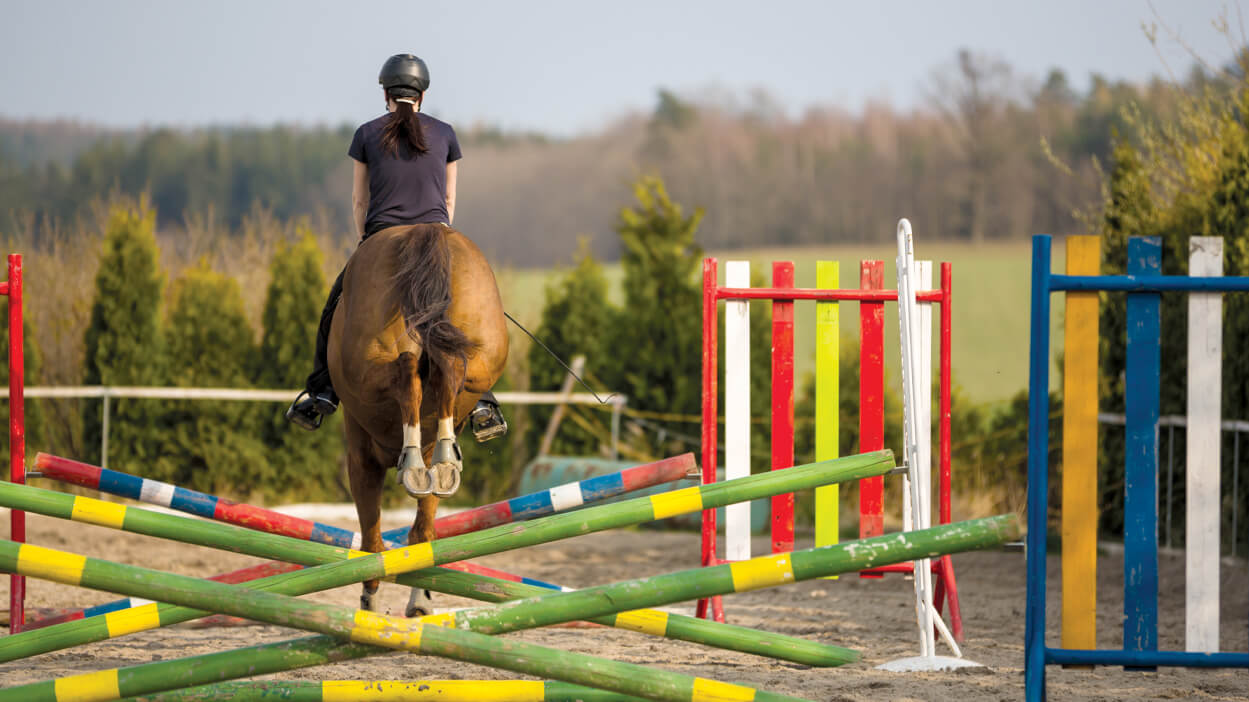Gymnastic grids are usually built to accommodate one, two or three shorter canter strides, bounces, or a combination of these. There are standard suggested measurements, but it is essential to adjust for your horse’s individual needs – natural size of trot and canter step, age, and conformation – so before you start jumping you should determine what that is.
1. Flat work, flat work, flat work.
Gymnastics are about teaching a horse how to shorten its stride, change its centre of gravity, and sometimes lengthen the stride when jumping. Incorporating trot and canter lengthening and shortening exercises into your flat work will help your horse feel more confident stepping into the gymnastics.
2. Measure the size of your horse’s natural canter stride.
Set two poles 11’ apart and with a light contact, canter the poles. Have a helper adjust the poles to suit your horse’s step, which can range from 10’-14’. You may even find one lead has a bigger step.
3. Start simple when building gymnastics.
Trotting in helps control speed and impulsion. Start small in height; building gradually guarantees a strong foundation. Set the canter stride to fit your horse’s natural step. If your horse’s natural step measured 14’, then set the one-stride at 20’ (adding 6’ for landing and takeoff).
When your horse is relaxed, begin to shorten the distance of the canter stride by 4” (a pole width). Watch for loss of quality of trot or natural canter stride (tense shorter stride, hollow back, loss of confidence) and jumping technique. If quality is maintained, repeat one or two more times, then shorten the distance by another 4”.
If quality starts to deteriorate, move the jump out 4-8” and start the process again. A rest period will restore any muscle fatigue.
Find a balance between raising the height of jumps and shortening the canter stride distance. The goal is keeping the quality of the canter step.
Gymnastics can be used to lengthen a stride using the same 4” formula as long as the horse increases the size of step, not the speed.
4. The combinations are endless.
16-19’ or 19-22’= 1 canter stride; 27-30’ = 2 canter strides; 41-43’ = 3 canter strides.
5. Finish with long and low.
It is important to end each session with stretching/lengthening the muscles in your cool-down. Work at the gait in which your horse will relax best – walk, trot or canter.



